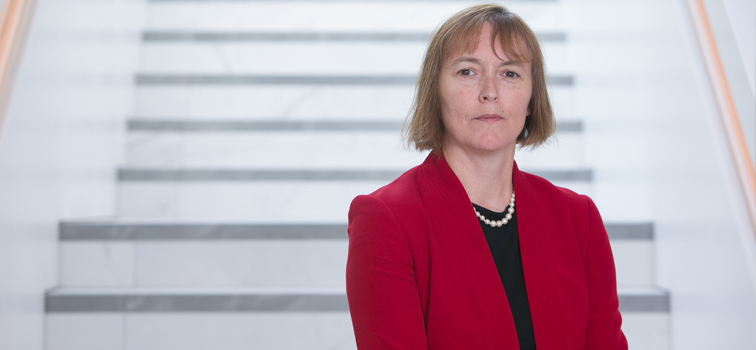Inflation and Labour Market Dynamics After the Pandemic – A Central Bank view
10 November 2022
Press Release

- Delivering the 10th Annual NERI Dónal Nevin lecture, Deputy Governor Sharon Donnery explained the drivers of current high inflation and reasons why central banks are raising their main policy rates.
- The labour market has rebounded strongly from the pandemic and, as a result, is placing upward pressure on wages.
- Historically low unemployment levels and enhanced labour market participation for younger people and woman are also key changes evident since the pandemic.
Deputy Governor of the Central Bank of Ireland Sharon Donnery today (Thursday 10 November 2022) delivered the 10th Annual NERI Dónal Nevin Lecture, on “Inflation and Labour Market Dynamics After the Pandemic”. The lecture examines the latest inflation developments and looks at how the Irish labour market is performing after the COVID-19 pandemic.
Deputy Governor Donnery attributes current levels of high inflation to a series of overlapping shocks that have hit the global economy in recent years, including the COVID-19 pandemic, the shift in consumer demand from services to goods and the war in Ukraine.
Speaking at the event, Deputy Governor Donnery said “Looking ahead, we see that some of the pandemic-related impulses for inflation are receding, though energy price levels are likely to remain elevated in the near term.
“It is vital that central banks remain vigilant around the risks of high inflation, as people’s personal expectations of inflation can become entrenched, and that in itself influences inflation. For example, if higher inflation is expected to persist, then workers will naturally demand higher wages, and employers may in turn raise their own prices.
“If this were to happen, it would make it much harder to sustainably achieve our 2% inflation target over the medium term. This is one of the reasons central banks are raising their main policy rates now.
This does not mean we do not expect wages to adjust to high rates of inflation – so-called ‘second round’ effects. But we want to avoid a situation whereby third and fourth round effects contribute to self-perpetuating wage-price dynamics.”
Commenting on the labour market, Deputy Governor Donnery explained how it rebounded strongly from the pandemic. This has driven down unemployment rates to historic lows, and boosted labour market participation for younger groups and women in particular.
She highlighted working from home as one pandemic change that has stuck, and that could have long-term profound implications for both how we work and wage developments. Certain groups – such as women, older and higher-income workers – are significantly more likely to be working from home.
This tighter labour market is putting upward pressure on wages. Current Central Bank projections are for wages in Ireland to grow at around 5-6% over the next two years. In the euro area, ECB projections are slightly lower, in the range of 4-5%.
Deputy Governor Donnery said: “Our own (PDF 841.17KB)recently published analysis of wage trends (PDF 841.17KB) – from online job ads – are broadly tracking these projections. Posted wage growth accelerated in the first half of 2022 to reach roughly two to three times pre-pandemic levels. Early signs are that wage growth has plateaued at these historically high levels — and actually fallen in some countries. Combined with gradually declining job postings in certain countries, this suggests that some employers are starting to rethink their demand for labour as they balance the currently tight labour market against an increasingly uncertain and deteriorating economic outlook.”